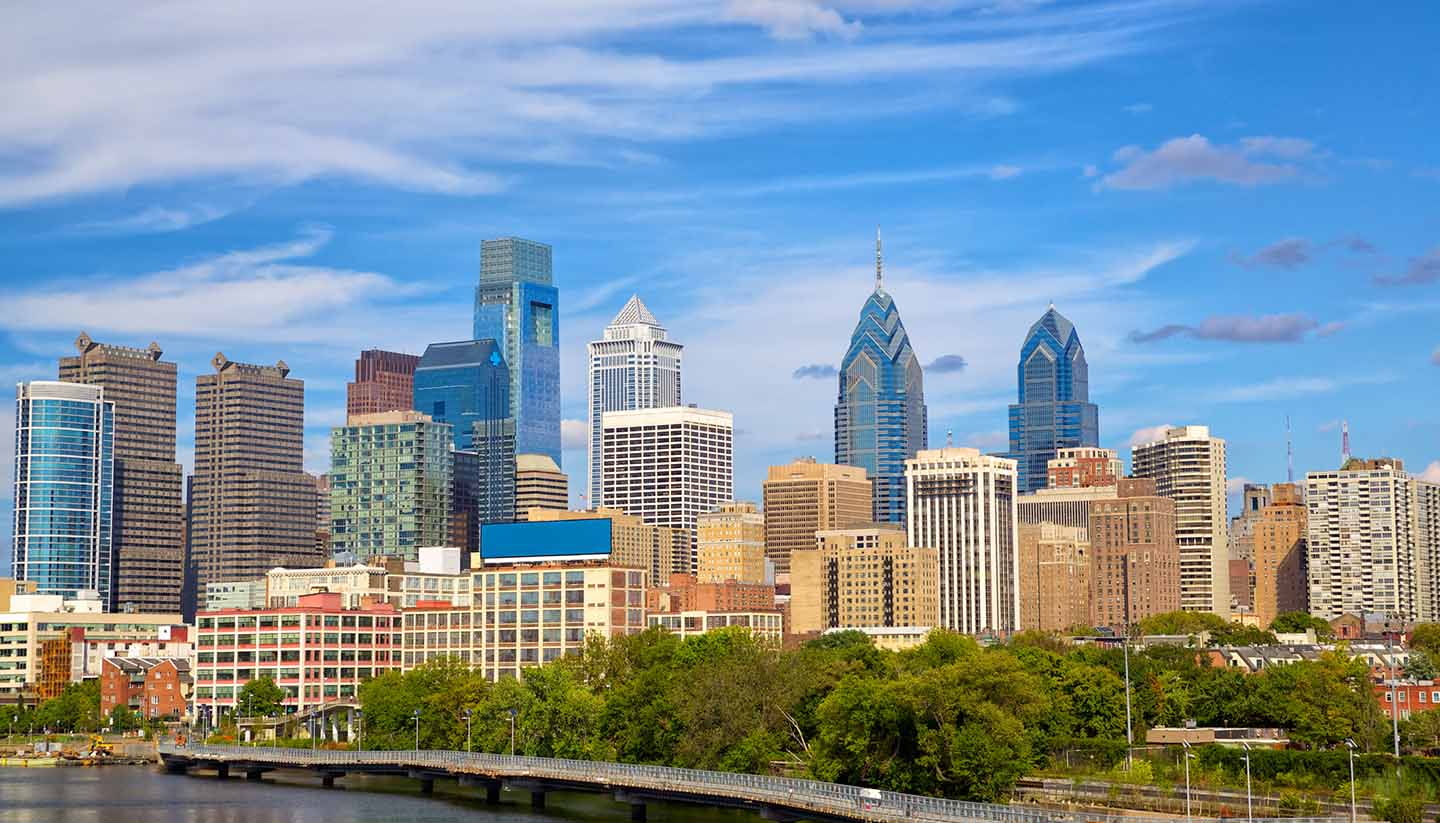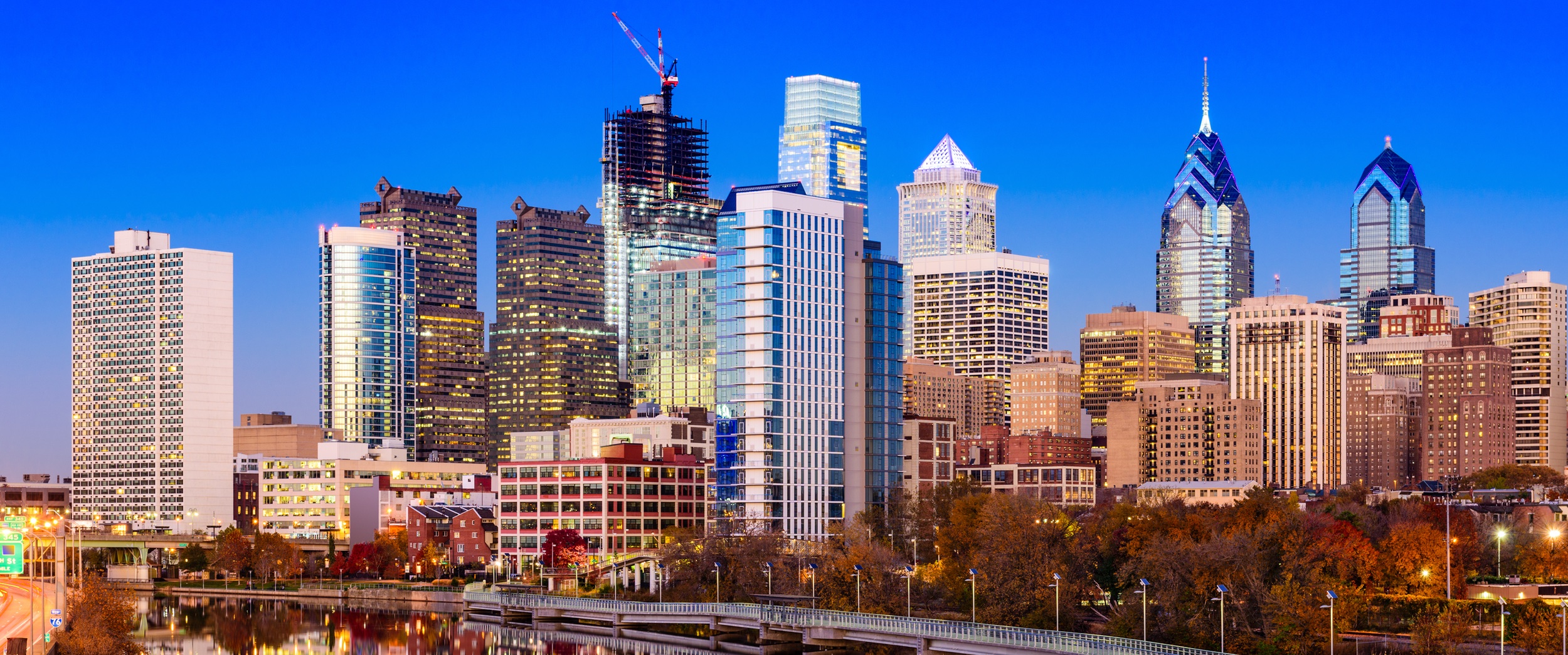Philadelphia History
Proud English Quaker, William Penn, was also a canny property entrepreneur. After immigrating to the New World to avoid persecution in England, he helped fellow Quakers purchase land which became known as New Jersey.
He was generously granted further American land by King Charles II (paying off a debt the king owed his father) and realising that this opportunity was not to be overlooked, he sailed to America to check out his new real estate.
The land eventually became Pennsylvania, but Penn originally called it New Wales before it later became Sylvania, which is Latin for forest or woodland. 'Penn' was added later as a tribute to his late father by the King.
In 1682, with Pennsylvania under his ownership, he set about creating a 'green country towne' in between the Delaware and Schuylkill rivers. Penn named his new town Philadelphia after the Greek word for 'brotherly love' to perhaps promote kinship between, and the Swedish and Dutch settlers building their own communities nearby. As the town took shape, it quickly expanded into a major trading hub.
Penn sadly never lived to see the result of his vision. He returned to live in England with his wife and eventually died penniless in 1718. However, his legacy of fair treatment for all, including the Native Americans, and his work towards creating a 'Union of American Colonies' as early as 1696, led Benjamin Franklin and Thomas Jefferson to count him as one of America's Founding Fathers.
Philadelphia's importance as a port made it the ideal location for the delegates of the 'thirteen Colonies' to hold the First and Second Continental Congresses during the American Revolution, and it was here that they ultimately declared their Independence.
Philadelphia was the natural choice as the new capital of the United States, a role it held from 1790 to 1800. Remarkably, downtown Philadelphia retains much of Penn's original layout, including the street grid system, the parks, and four out of his five original squares.
Did you know?
• The original Liberty Bell was shipped over from London’s Whitechapel Foundry in 1751. It cracked on its first ring, so was melted down and recast in Philadelphia.
• Al Capone was held in the Eastern State Penitentiary from 1929-30 after being arrested for carrying a concealed deadly weapon.
• Opened in 1901, Philadelphia's City Hall is the largest municipal building in the world with almost 700 rooms.



